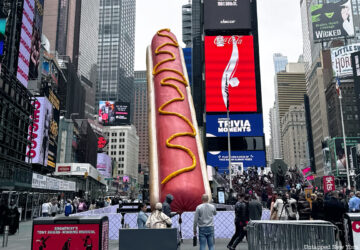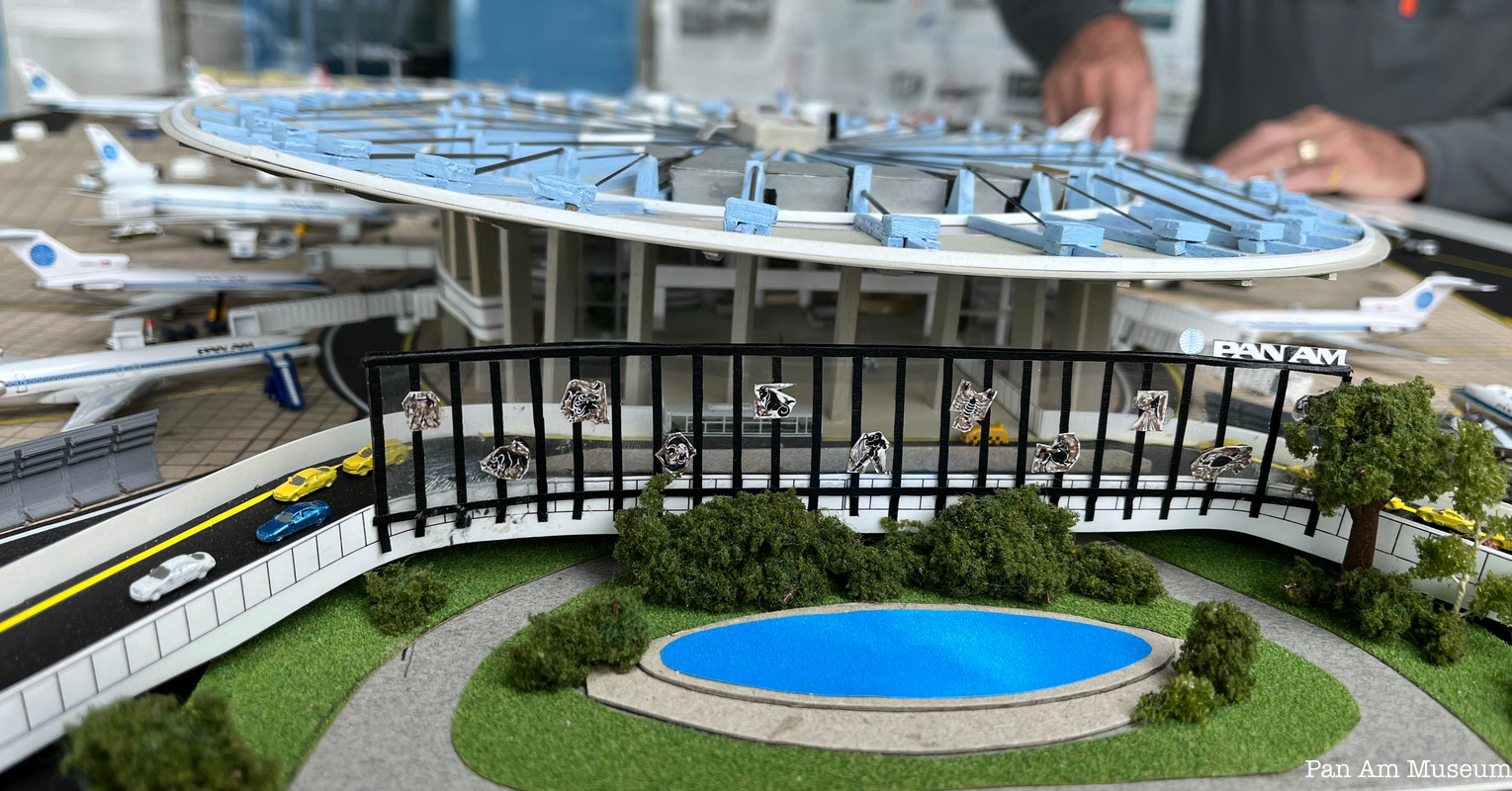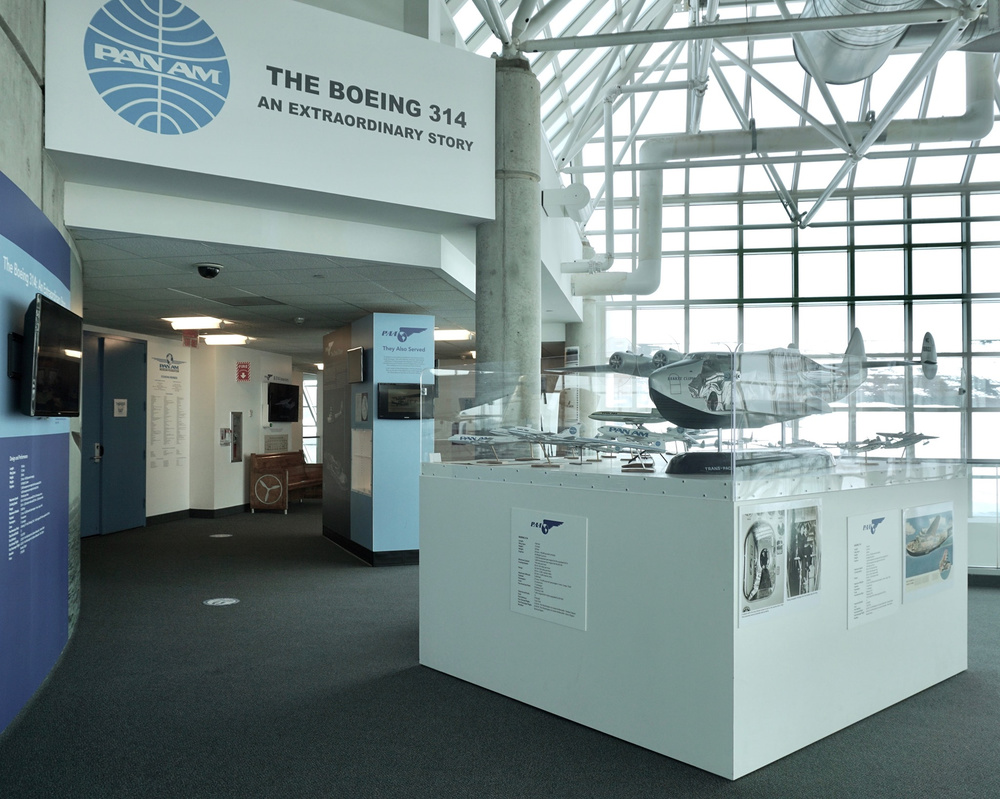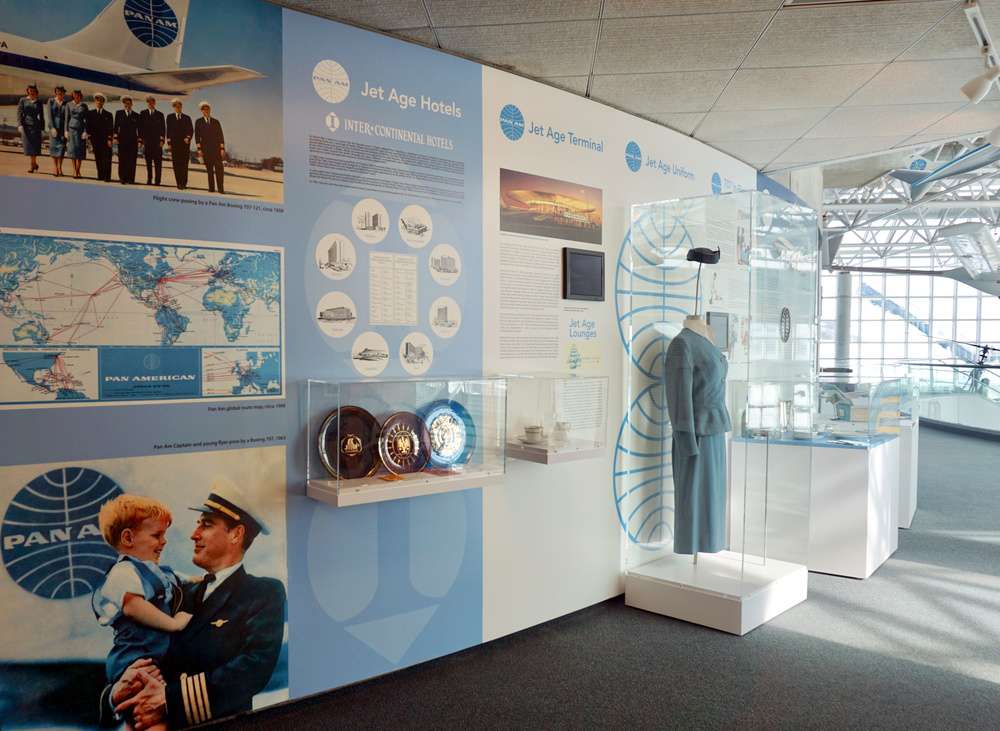Since its inception as an airmail carrier in the 1920s, Pan American World Airways has led aviation innovation with a slew of “firsts.” Known as Pan Am, the airline was the first to create its own airport and air traffic control system, the first to offer scheduled transatlantic flights for passengers, and the first to fly many groundbreaking craft such as Clipper flying boats and Boeing’s 377 Stratocruiser. Pan Am operated until 1991 when Delta took over its transatlantic routes and terminal at JFK Airport. Though the airline no longer flies, its historic legacy is preserved by the Pan Am Museum, fittingly housed inside Long Island’s Cradle of Aviation. Here, we take a look at some of the most fascinating artifacts in the museum’s collection, which bring to life the airline’s 70-year history!
Explore the Pan Am Museum on a private, off-hours tour with Untapped New York Insiders on April 29th! You can join us in person at the Cradle of Aviation where our tour will be led by Linda Freire, Board Chair, Co-Founder, and Museum Director of the Pan Am Museum Foundation, or tune in to the virtual live stream. Both are free for Untapped New York Insiders! Not an Insider yet? Use code JOINUS when you become a member today and get your first month free!
1. Worldport Model
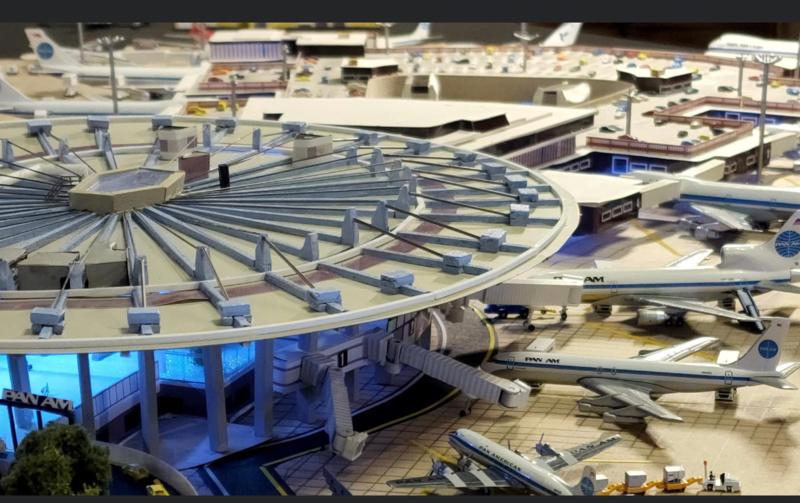
The Worldport, Pan Am’s iconic Modernist terminal building at JFK Airport, has been the site of such historic events as the first flight of a Boeing 707 and The Beatles’ departure from America in 1964. The terminal opened in 1960 and was in use until 2013. Designed by Ives, Turano & Gardner Associated Architects and Walther Prokosch of Tippets-Abbett-McCarthy-Stratton, the structure had a flying-saucer-shaped roof.
Eight-passenger jets could park around the building, nose in toward the structure. Planes parked at the terminal were partially covered by the overhang of the saucer-shaped roof which shielded passengers from the elements as they boarded their plane. This feature of “bringing the plane to the passenger” was an innovation of the terminal. As planes became bigger, the terminal needed to expand. In 1970 an addition was added which allowed for enough space to park 16 planes.
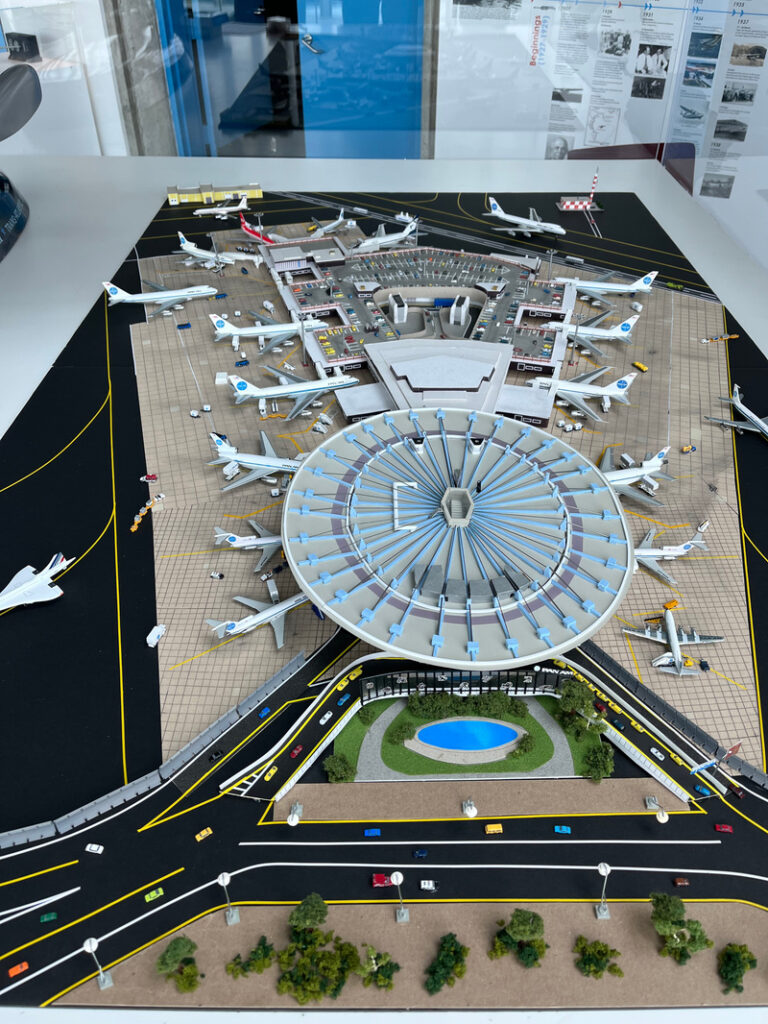
You can see the addition in the model of the Worldport at the Pan Am Museum. This model, at a 1:400 scale, shows the terminal as it appeared in the 1970s. Crafted by Brian Keene, an aviation professional and former Pan Am flight attendant, the diorama shows some of Pan Am’s iconic aircraft and the zodiac sculptures that once graced a steel screen at the terminal’s entrance. Artist Milton Hebald crafted these twelve bronze sculptures. Since the terminal’s demolition in 2013, the sculptures have been in a storage facility run by the Port Authority of NY/NJ.
2. 1966 Pan Am Barbie
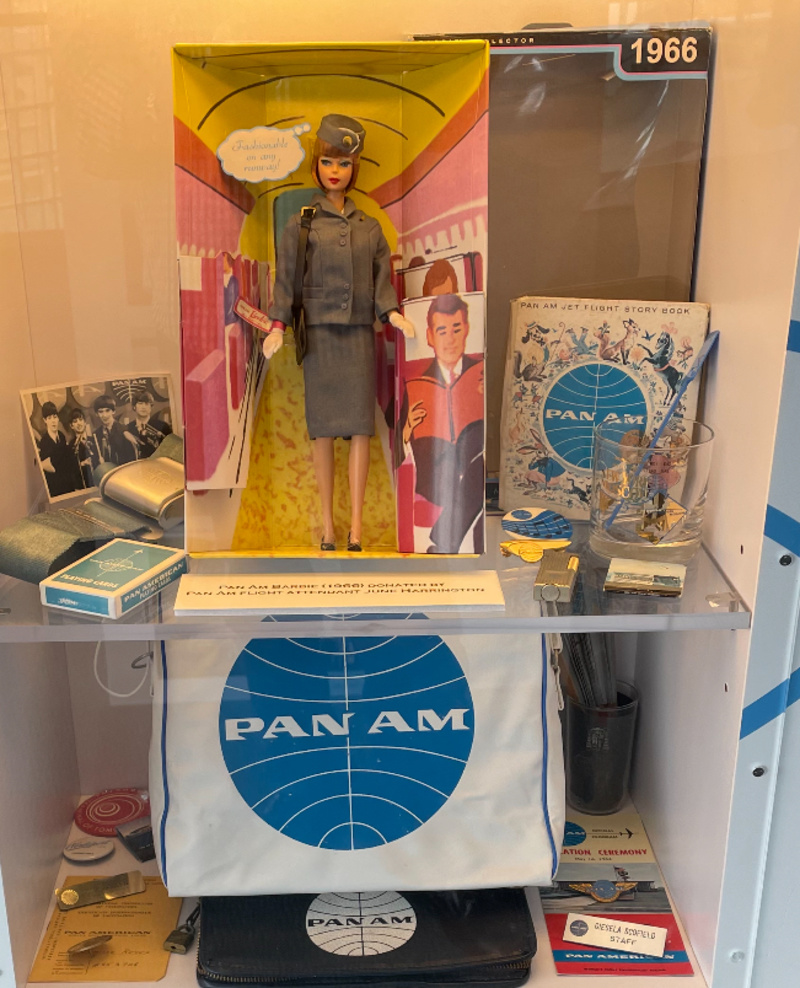
When you think of Pan Am, you invariably think of the iconic blue-grey suits worn by the flight attendants, or stewardesses as they were called at the time. In 1966, Mattel put the look on Barbie. The Pan Am Barbie Doll was introduced as part of the “My Favorite Career” series. She sported a tiny version of the Pan Am flight attendant uniforms designed by Don Loper. Loper designed costumes for Hollywood films and also made fight attendant uniforms for TWA.
The Pan Am uniform consisted of a white short-sleeved blouse, a jacket, a skirt, black heels, white gloves, and a pill box hat. Once on board the plane, flight attendants changed out of their jackets and into smocks. There were strict rules for how the uniform and a flight attendant’s hair and makeup could be worn. Former flight attendant Daniele Desmoulins Perez-Venero recalled how she got in trouble for wearing green eyeshadow instead of blue.
3. 1935 Souvenir Program of the Inaugural Flight of the China Clipper
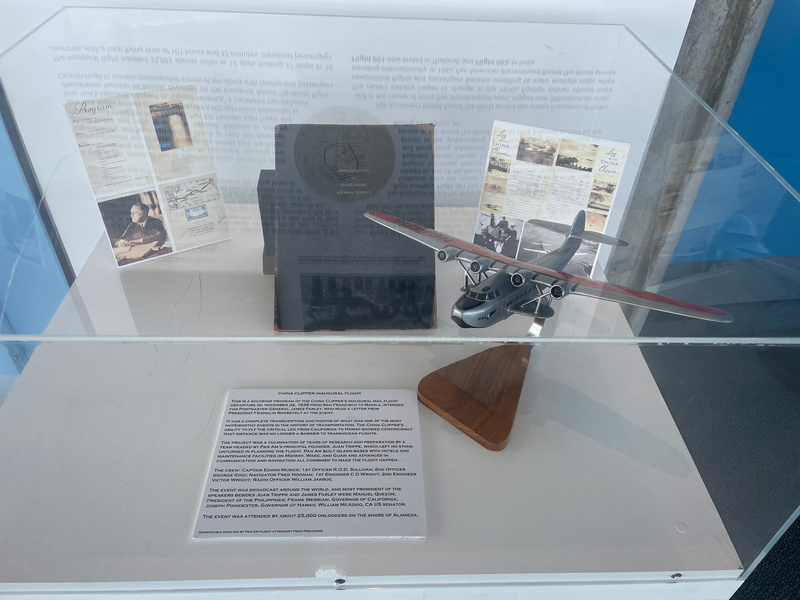
Pan Am completed the first transoceanic commercial airliner flight in November 1935 with the China Clipper. The Clipper was a four-engine Martin M-130 flying boat crafted to Pan Am’s specifications for the flight. Commanded by Captain Edwin C. Musick, the flight took off from Alameda on San Francisco Bay and arrived in Manila six days later after stops in Honolulu, Midway, Wake, and Guam, where Pan Am had constructed air bases and overnight passenger accommodations.
The souvenir program on display at the Pan Am Museum contains a complete transcription and photos from the departure ceremony. Postmaster General James Farley, Pan Am founder Juan Trippe, and the President of the Philippines Manuel Quezon were a few of the notable figures in attendance, along with 25,000 onlookers. The “Flying Clippers” became iconic aircraft for Pan Am which offered passengers a luxurious mode of travel to compete with transoceanic cruises.
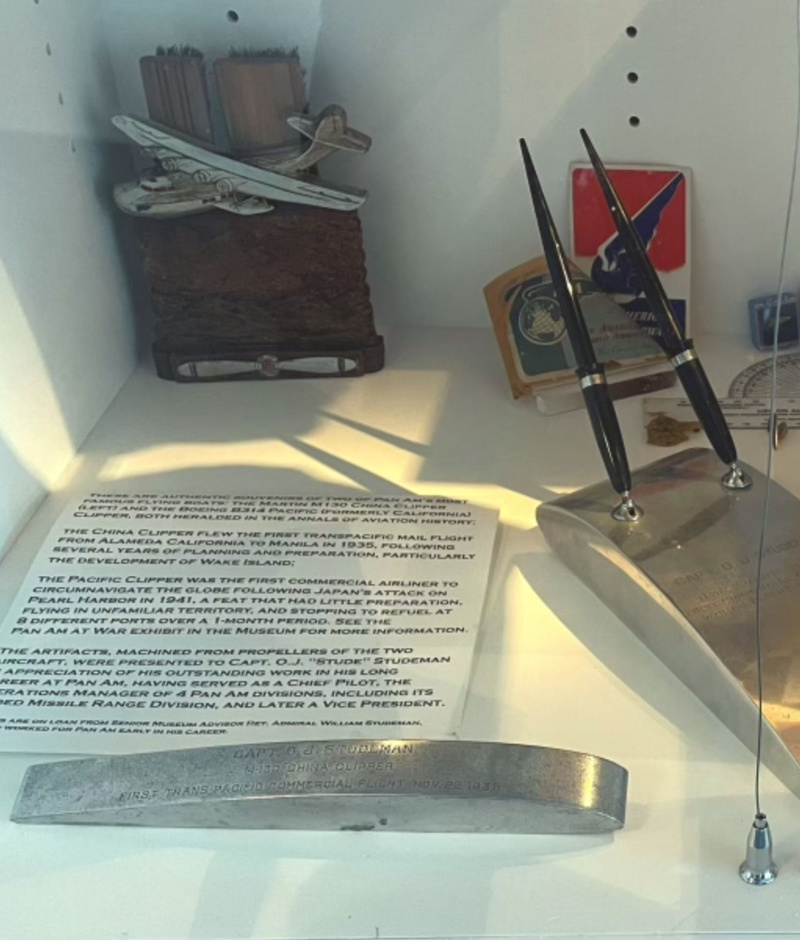
These three highlights are just a small teaser of the many artifacts you’ll find on display at the Pan Am Museum! A few more highlights include prop relics of the B-314, an actual stewardess uniform, dinnerware from in-flight services, and a short snorter, which is a banknote inscribed by people traveling together on an aircraft. Join Untapped New York Insiders for a private off-hours tour of the Pan Am Museum to see these and more on April 29th! You can join in person at the Cradle of Aviation or tune in to the virtual live stream. Both are free for Untapped New York Insiders! Not an Insider yet? Use code JOINUS when you become a member today and get your first month free!
Next, check out Tracking JFK’s Airport Turtles
